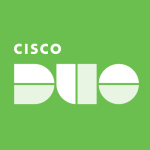What is our primary use case?
We are a partner of Palo Alto. We focus on healthcare customers, and we help them onboard and manage different Palo Alto solutions, including Prisma SaaS.
It gives you visibility and an understanding of what you have in your environment. A couple of years ago, all the information that you had in your SaaS environment was kind of a black box. You didn't have any information about what you or your employees had there. So, visibility is one use case, and another very important use case is the ability to review the way the files and information are shared. You can see if a confidential file is being shared. Having this information and awareness is important for the administrators of Office 365 and other environments so that they can make corrections.
With the use of the Data Loss Prevention (DLP) module, the scanning process scans all the files that you have in there and classifies them through the DLP engine. So, when you get your results, you would have files with the matching results, such as with credit card numbers or phone numbers. There are also data profiles or policies, such as PCI, PII, or GDPR compliance. Palo Alto is working on adding more profiles, such as HIPAA, based on different compliance standards in the industry.
It is a SaaS solution, and we are using its most recent version.
How has it helped my organization?
You get the control and visibility into what you have in your SaaS applications. It helps you to know what you have in your environment and then meet your compliance needs. You get to know whether all of them are on a single platform. You also get an understanding of what type of information you have and how it is disposed of. Based on the results that you get from the scanning process, you can accomplish goals, such as PCI compliance or GDPR compliance. Most of the customers are governed by their security information team and have an obligation to be compliant with different industry standards, such as PCI, PII, or GDPR. With this platform, you are a step ahead in knowing what you have in your environment and accomplishing the compliance goals.
What is most valuable?
You have the ability to create your own expressions for your data. Palo Alto understands that DLP is not the same for all consumers. You might have a particular need to fulfill, and they give you the opportunity to create a custom expression to match the specific format that you have. For a confidential file property that you have in your files, you can add a metadata field. It gives you that opportunity to create that.
Another thing that I really like is the Azure AD integration. You can integrate with Azure AD in order to apply what they call the groups in Azure AD. You can apply groups, and you can have different characteristics, but the most important thing for me is that you can select groups and put the groups into your policies because your DLP or the things that you want to catch may be different for different departments. Your requirements would be different for your HR department versus your development team. For the HR department, it would be more useful to have PII information because they are trying to work with new employees and information. So, it should be different. With Azure AD, you can make a differentiation between these two departments. I found that very useful.
What needs improvement?
They can add some new characteristics. For example, when an incident triggers, they can automatically send a template for a particular match that is related to the policy. We don't have that right now. It is something to improve. There could be more automation for certain actions. For example, for a particular group, it can send an administrator alert to their manager. It was one of the concerns of our customers.
You have three types of rules in SaaS Security API. You have the asset policies. You have the user activity policies, and you have the security control rules. Asset policies are more general, and they are more focused on the general behavior of an asset, which is a file. The user activity rules control or alert about unusual user activity or compliance violations, such as when a user uploads a large number of files. It would be good if you can put User IDs for the asset rules. In the asset rules, you can use the Azure AD group, but you cannot use the User ID. That would be a good improvement.
Palo Alto has a lot of different solutions, and it would be good if the DLP part can be integrated with other solutions as well.
For how long have I used the solution?
I've been working with Prisma SaaS for two years.
What do I think about the stability of the solution?
In general, it is good, but everything could be a little bit better. For example, they are working on including more data to catch or trying to reduce the gaps between the matches. It is DLP, but it is not perfect. We're going to have a false positive. They are working on closing that gap and being more accurate, but in general, it gives you accurate and reliable information.
What do I think about the scalability of the solution?
You can onboard certain applications, and if you add more and more files, it's going to continue scanning those files. If you take a business decision to purchase a new SaaS application for your team, such as Slack, you can onboard that new application. You don't have a particular limitation on that. So, if you want to grow and have more business applications, your only concern should be whether they are supported by SaaS Security API. That's because not all the applications work the same way or have the same characteristics, but it gives you an opportunity to grow.
We have had environments with 200 to 2,000 users. It depends on a customer's SaaS environment, and if they want to apply to all of it or a part of it. There was a requirement from a customer to be notified when there is a file share with certain domains, which were their competitor's domains. That way they would get to know when someone from inside the company is sharing information with the competitors. Another common requirement is to be notified or create an incident when I share a public file in my Office 365 account.
It is gaining more popularity among different customers in the last year. Palo Alto is trying to focus and combine it with other types of solutions related to DLP in order to secure not only your SaaS environment but all of your perimeter. Palo Alto is going to be very focused on that, and its usage is going to increase. In the past, it was not something that a lot of customers required. Palo Alto is working on improving the platform and making it more attractive to meet customers' needs. The market is changing continuously, and Palo Alto is focused on having DLP in different environments.
How are customer service and support?
I didn't use their support that much, but it is fine. Palo Alto has different teams that are focused on different types of solutions. They have a SaaS team for the SaaS API problems that can come. They are good, but sometimes, it would be good to have a quicker response from their side because you want to resolve an issue as fast as you can. They have a lot of companies, and it is kind of hard. You would find this problem with most of their partners, but they always come to you with a good disposition and try to solve it in the shortest time possible. So, overall, their support is good. I would rate them a four out of five.
How would you rate customer service and support?
Which solution did I use previously and why did I switch?
I didn't use any similar solution previously. The company that I have been working for is very focused on Palo Alto solutions, and I didn't have the opportunity to work with other tools that are on the market.
How was the initial setup?
In most cases, it is easy, but it depends on the application that the customers want to onboard. For example, if you want to onboard Office 365, Microsoft Teams, and Exchange, the onboarding is easy because you can use the same user account for these three solutions. The challenging part is that you need to create an account with the specific rights for communication and gathering the appropriate information. That's more complex. In some cases, the companies are not completely controlling their Office 365 environment. They have a leader company that gives you the rights, which can take a bit longer.
It could be challenging when you try to use the S3 bucket because you have to work with the IAM to get the exact privilege access to the bucket. That's a more complex part, but if you know what you are doing, it's not that hard.
For me, its implementation is very straightforward. I would rate it a four out of five in terms of ease. Its duration varies because it depends on the information that you have in your SaaS applications because it's going to communicate with your applications through API. It depends on a lot of things, but in my experience, one week to one and a half weeks is generally enough time. It is not something set in stone. It can take less or more, but you obtain a lot of information once that is finished.
What about the implementation team?
It is not necessary to have a consultant from Palo Alto. The activation part is straightforward. They send you a magic link to have access and configure it. It takes about 20 to 30 minutes to generate the tenant, if I am not wrong. After that, it's very straightforward. There is documentation about each application that you want to onboard.
Before implementing it, it is very important to have a conversation with the customer about the applications they want to onboard, and inside those applications, what type of information they want to catch. For example, a pharmaceutical company might not be as aware of all the compliances for HIPAA or PII. It is important to have that information in order to understand what they want to catch. You can have that covered with predefined ones. We might also have to create custom ones, but it is not that necessary to have someone from Palo Alto if you have a correct partner who knows about the platform.
After onboarding applications, we recommend testing the rules on specific owner files to verify that the results that you are obtaining are accurate and as expected. If they are good, you can go ahead and apply the rules for all. Because a rule is already tested, you don't have to modify it a lot later. If you have a new need, you can create a new rule. After that, the knowledge transfer with the customer is very important. It is not a complex application to manage for the customer, but they really need to understand what it's doing. This knowledge transfer is really important, and it is something that we care about a lot in the company.
What other advice do I have?
After rebranding, its name now is SaaS Security API. My experience with the product is mostly good. Before going for this solution, it's very important to understand what the customer is looking for. In terms of visibility, it's very good because it's an opportunity to have a lot of visibility about the applications that you onboard. For example, you have all that information centralized, and you can apply policies for them. It is very good for that purpose, but it's communication through an API. So, it's not something like a firewall where you can block something instantaneously. It requires a different approach. You need to have an understanding and the objective to obtain visibility and gain more results.
You need to be very clear about what you are looking for and what type of information or compliance you want. Focus on not using it as an individual solution. It's a platform that generates more value when working together with other solutions.
I would rate this solution an eight out of ten.
Disclosure: My company has a business relationship with this vendor other than being a customer. Partner


















